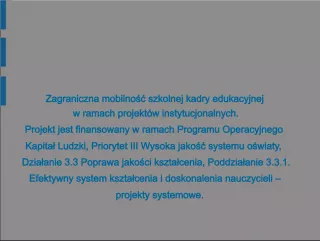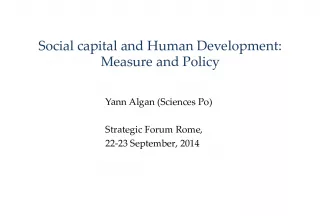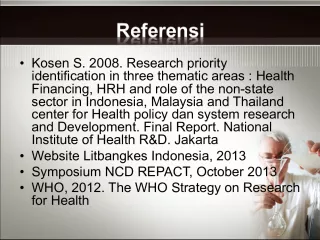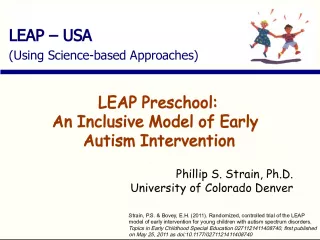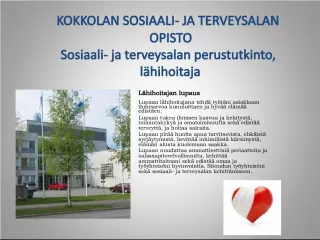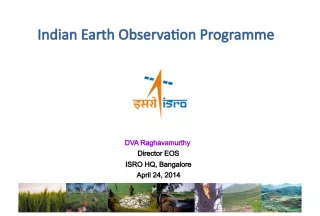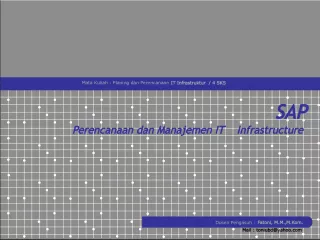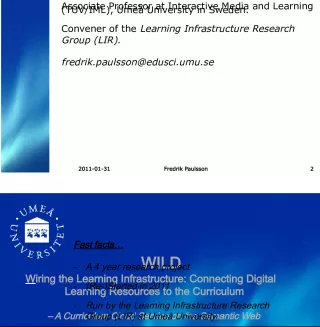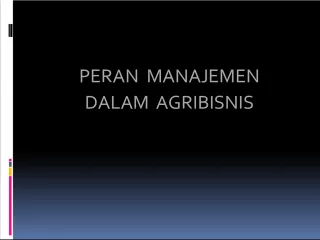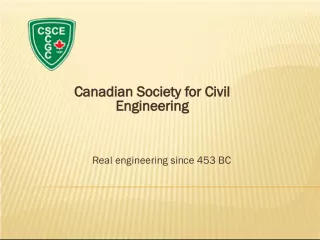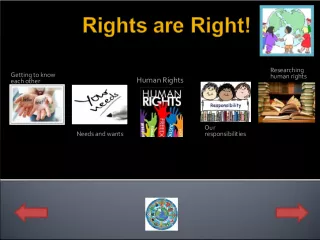Building Human Capital and Institutional Infrastructure for Inclusive Health Innovations


This article discusses the importance of technology transfer in making scientific advancements accessible to a wider audience, and the role of universities, industries, and governments in building infrastructure and human capital to accelerate global access to inclusive health innovations.
- Uploaded on | 0 Views
-
 josias
josias
About Building Human Capital and Institutional Infrastructure for Inclusive Health Innovations
PowerPoint presentation about 'Building Human Capital and Institutional Infrastructure for Inclusive Health Innovations'. This presentation describes the topic on This article discusses the importance of technology transfer in making scientific advancements accessible to a wider audience, and the role of universities, industries, and governments in building infrastructure and human capital to accelerate global access to inclusive health innovations.. The key topics included in this slideshow are . Download this presentation absolutely free.
Presentation Transcript
Slide1Building Human Capital andInstitutional Infrastructure to Accelerate Global Access to “Inclusive Innovations” in Health Aleck Ncube National University Of Science And Technology (NUST), Zimbabwe
Slide3Technology transfer is the sharing of skills, knowledge, technologies, and facilities among industries, universities, governments and other institutions to make scientific and technological developments accessible to a wider range of people who can further develop and exploit the technology. [IP Advocate]
Slide4Technology transfer is the process of transferring scientific findings from one organization to another for the purpose of further development and commercialization. [AUTM]
Slide5The technology transfer process typically includes: Identifying new technologies Protecting technologies through patents and copyrights Forming development and commercialization strategies such as marketing and licensing to existing private sector companies or creating new start-up companies based on the technology [AUTM]
Slide6Innovation and TechnologyEntrepreneurship Challenge : To benefit from the global pool of technology, developing countries need to build the capacity to find, absorb and use it. This will entail building the capacity to plug into global technology networks and institutions that will facilitate this connectivity. Partnerships have a vital role to play in helping developing countries build this capacity. Global Forum Action Plan: Science, Technology and Innovation Capacity Building Partnerships for Sustainable Development, September 1, 2010, Compiled by Alfred Watkins and Joshua Mandell (with Alistair Brett)
Slide7Inclusive Innovation: The objective of inclusive innovation is to harness sophisticated science and technology knowhow to invent, design, produce, and distribute, primarily via private sector SMEs, high performance technologies at prices that can be afforded by the billions of people at the Bottom of the Pyramid. Global Forum Action Plan: Science, Technology and Innovation Capacity Building Partnerships for Sustainable Development, September 1, 2010, Compiled by Alfred Watkins and Joshua Mandell (with Alistair Brett)
Slide81.Chagas Disease Vaccine 2. Parasitic Roundworm Vaccine 3. Phytoremediation of Dioxin 4. Golden Rice 5. Cholera Vaccine 6. Rotavirus Vaccine 7. Red Detect Landmine Detection System Examples of innovations (inventions) applicable to needs of developing countries (inclusive) but subject to potential IP rights (i.e. patents/patent applications). :
Slide9Chagas Disease Vaccineshttp://ameliecalot.es/2011/02/08/%C2%BFque-es-el-chagas /
Slide10ParasiticRoundworm Vaccine
Slide11DioxinPhyto- remediation
Slide12In developing countries, vitamin Adeficiency (VAD) is a major problem affecting primarily children under age five and pregnant women:
Slide13Severe VAD leads to:1. permanent blindness 250,000 children, lose their sight every year due to VAD. 2. a depressed immune system that increases the incidence and severity of infectious diseases and infant mortality rates. VAD afflicted children die at nine times the rate of healthy children, with over one million children dying of infections every year.
Slide14To mitigate VAD, engineer (insert)relevant genes into rice, to generate beta-carotene-rich rice, thus enhancing carotene in local rice varieties and, in local diets: “ Golden Rice ”:
Slide15Cholera VaccinesCholera continues to plague developing countries across the globe. (WHO)
Slide16Rotavirus Vaccines A leading cause of severe diarrhoea in children under five years of age, rotaviral infections kill more than 500,000 children each year worldwide. Nearly 50% of all rotavirus deaths occur in Africa (250,000 annually). (WHO)
Slide17Red Detect,Landmine Detection Technology
Slide18As these examples of inclusiveinnovations illustrate, there is now a global innovation market . Accessing innovation in developing countries will be either accelerated, or obviated, based on the level of capacity: human capital and institutional infrastructure.
Slide19IP Capacity Building: Crucial for GlobalDevelopment: • Technology transfer • Building partnerships in research and development • Trust, cooperation, collaboration • Capacity in IP is essential • Capacity building is two-way, that is, reciprocal • Not only about “getting” IP • Part of the larger development perspective
Slide20building the institutions to facilitate this process:A supportive legal environment is necessary but not sufficient for … effective technology transfer … must be supplemented by the establishment of an Innovation and Technology Entrepreneurship Center (ITEC) to handle … spinning-in, adapting for local use, and spinning-out technology. This organization can either be a newly established entity or an existing unit within an established organization (Inclusive Innovation Center or university technology transfer centers), retrofitted to carry out new functions. Global Forum Action Plan: Science, Technology and Innovation Capacity Building Partnerships for Sustainable Development, September 1, 2010, Compiled by Alfred Watkins and Joshua Mandell (with Alistair Brett)
Slide21The time-honored ways (of “capacitybuilding”) are no longer adequate: Workshops Whitepapers High-level Symposiums
Slide22Creative approaches (for “IP management”)are not sustainable development strategies: Revisions (re-revisions) of Laws and Treaties (e.g. TRIPS, etc.) Novel IP Management Tactics (Open-source, IP Pools, Clearing Houses, IP shares markets) Delayed Compliance with Treaties, IP “Free Zones”
Slide23Global CommunityDevelopment is now needed: International partnerships to advance IP management and tech- transfer capacity, accelerating access to crucial innovations in health.
Slide24Partnerships in Development:IP Capacity is Fundamental Product development partnerships are taking an increasingly dynamic role in addressing global concerns in public health, nutrition and food security. However, for sustainable development, the common cornerstone of every effort is the requirement for systematic establishment and strengthening of technology transfer and IP management capacity in developing countries.

